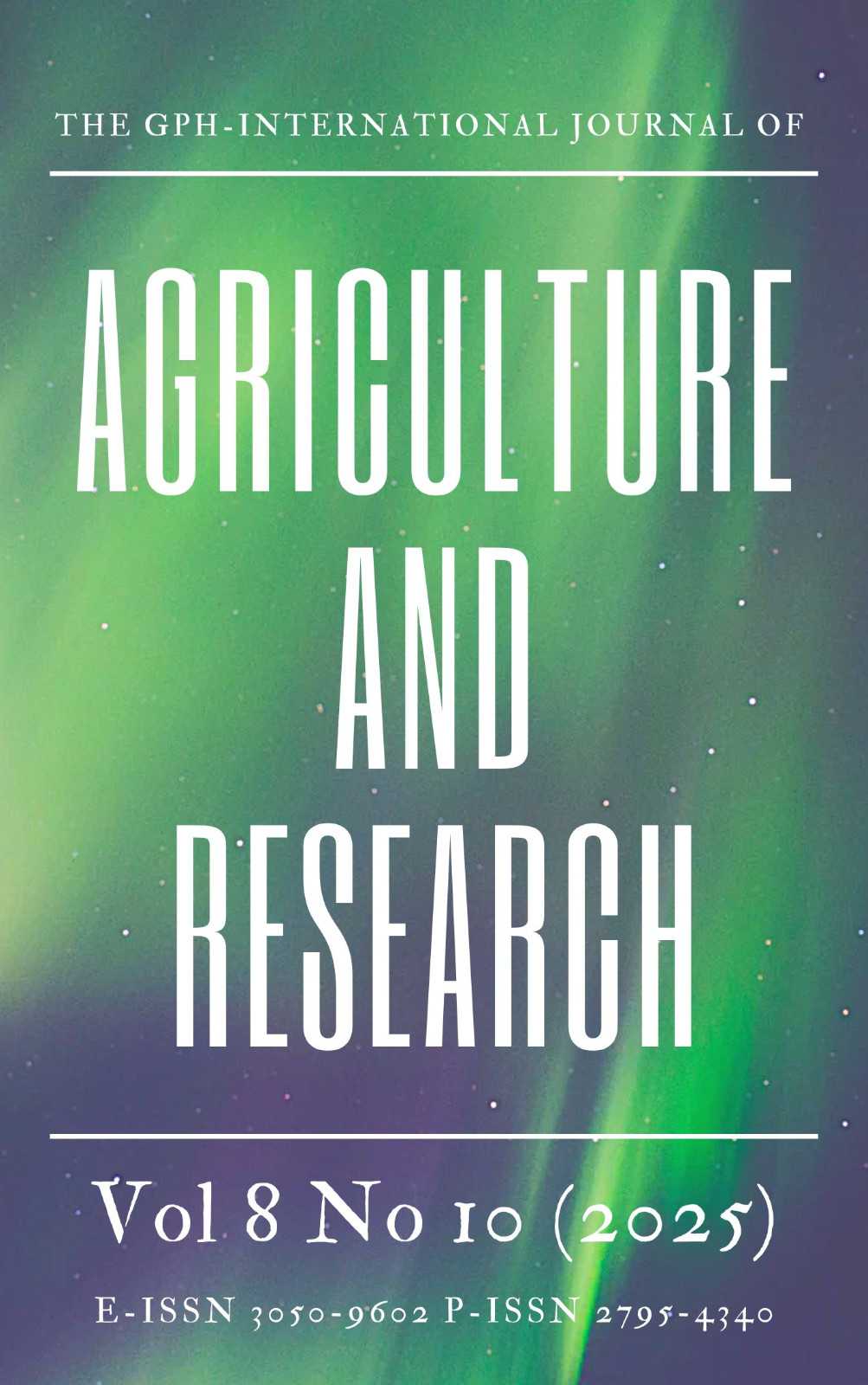ANTHRACHNOSE DISEASE IN MELON (Cucumis melo L.)
Abstract
Anthracnose (Colletotrichum obiculare) of melons is a fungal disease caused by Colletotrichum species. It appears as sunken black lesions on the fruit and spots on the leaves and stems. Symptoms include yellow spots that turn brown and brittle on the leaves, dark, elongated lesions on the stems, and sunken circular spots on the fruit that can produce pink or orange spore masses in wet conditions. The disease is spread by wind, rain, and infected seeds or plant debris and thrives in warm, humid weather.
Downloads
References
2) Roberts P.D., G. Vallad, S. Zhang, N. Dufault, and M. Paret. 2023. Anthracnose on Cucurbits in Florida. University of Florida.
3) Damm, U.; P. F. Cannon, F. Liu, R. W. Barreto, E. Guatimosim, and P. W. Crous. 2013. “The Colletotrichum orbiculare Species Complex: Important Pathogens of Field Crops and Weeds.” Fungal Diversity 61: 29–59.
4) Wasilwa, L. A., J. C. Correll, T. E. Morelock, and R. E. McNew. 1993. “Reexamination of Races of the Cucurbit Anthracnose Pathogen Colletotrichum orbiculare.” Phytopathology 83 (11):1190-1198.
5) Guo, Z., C. X. Luo, H. J. Wu, B. Peng, B. S. Kang, L. M. Liu, M. Zhang, and Q. S. Gu. 2022. “Colletotrichum Species Associated with Anthracnose Disease of Watermelon (Citrullus lanatus) in China.” Journal of Fungi 8, no. 8: 790.
6) Ferreira S.A. and R.A. Boley. 1992. Colletotrichum lagenarium. Anthracnose fruit rot (Plant Disease Pathogen). Crop Knowledge Master. Department of Plant Pathology,CTAHR. University of Hawaii at Manoa.
7) McGrath M.T. 2022. Anthracnose of Cucurbits. Cornell Vegetables. Resources for commercial growers. Cornell University.
8) Feliciano-Rivera M. 2011. Efficacy of Organically Certifiable Materials and Natural Compounds Against Foliar Hemibiotrophic and Necrotrophic Fungi in Cantaloupe and Tomato. University of Kentucky. UKnowledge. Doctoral Dissertations.
9) Damm, U.; Cannon, P.F.; Liu, F.; Barreto, R.W.; Guatimosim, E.; Crous, P.W. The Colletotrichum orbiculare species complex: Important pathogens of field crops and weeds. Fungal Divers. 2013, 61, 29–59.
10) von Arx, J.A. A revision of the fungi classified as Gloeosporium. Bibl. Mycol. 1970, 24, 1–203.
11) Gardner, M.W. Anthracnose of Cucurbits; U.S. Department of Agriculture Bulletin; U.S. Department of Agriculture: Washington, DC, USA, 1918; pp. 1–68.
12) Liu, B.; Wasilwa, L.; Morelock, T.; O’Neill, N.; Correll, J. Comparison of Colletotrichum orbiculare and several allied Colletotrichum spp. for mtDNA RFLPs, intron RFLP and sequence variation, vegetative compatibility, and host specificity. Phytopathology 2007, 97, 1305–1314.
Author(s) and co-author(s) jointly and severally represent and warrant that the Article is original with the author(s) and does not infringe any copyright or violate any other right of any third parties, and that the Article has not been published elsewhere. Author(s) agree to the terms that the GPH Journal will have the full right to remove the published article on any misconduct found in the published article.

























